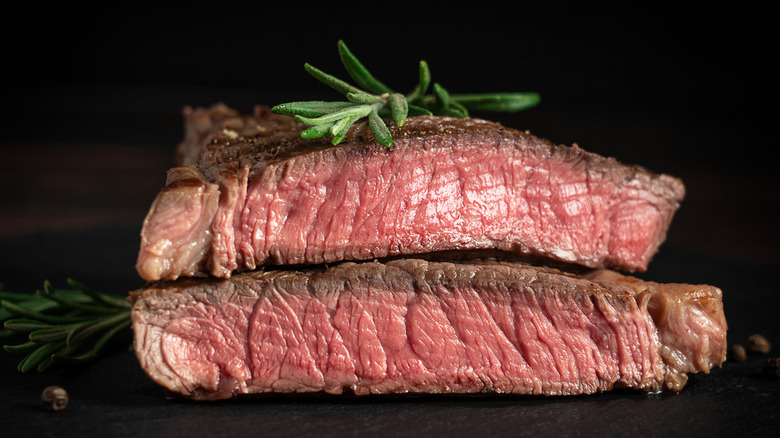What Does Slicing Meat 'Against The Grain' Mean, Really?
If you've ever read a steak recipe, or even just listened to your family grill master talk about their latest masterpiece, you've probably heard of the concept of slicing meat against the grain. Slicing against the grain is typically done for secondary cuts of steak, like skirt or flank. These cuts come from parts of the cow where the muscles are used often, producing notoriously tougher cuts with long muscle fibers.
Cutting the steak at an angle to the meat's muscle fibers (against the grain) will shorten them, resulting in tender pieces that seem to melt in your mouth. If you cut with the grain, you leave all those fibrous pieces intact, producing tough and chewy slices that can ruin even the most delicious and perfectly cooked steaks. While chicken also has a visible grain, cutting against it can make your poultry so tender it falls apart. For poultry, opt for a not quite 100 percent against the grain, angled just a little less.
Finding and cutting against the grain
The first time you go to cut against the grain with that perfect steak from the store, don't be surprised if you get a little confused staring at the piece of meat. Luckily, it's much easier to detect the grain than you might initially think. To find it, you'll want to examine the meat in its raw form to help you see the fibers better. Look for the parallel lines of muscle — and make sure to check the entire piece as sometimes the grain direction changes. After the steak has been cooked and rested (the most crucial step for the perfect steak, according to Anthony Bourdain), you may want to cut it into smaller more manageable pieces, especially if you have a long flank or hanger steak. Then cut the steak at about 90 degrees to those lines, slicing perpendicular to the grain.
When it comes to cuts of meat with finer grains, like filet mignon or New York strip, finding the direction of the muscle fibers may be tougher. In these cases, the grain usually runs vertically from top to bottom, so slicing those cuts on an angle from top to bottom is typically cutting against the grain.


